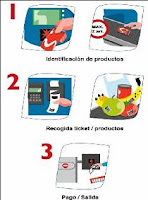***************************************************************
**what is the most common greenhouse gas emmited from human activities?
*the most common greenhouse gas is: clorofluorocarbono.
**Do you think greenhouse gases in the atmosphere are always bad for humans and the environment?
*No, i think greenhouse gases are good, but it this converted in one problem called climatic change.
**In which of the following ways do people increase the concentration of the greenhouse gases in the atmosphere and why?
a) cutting down trees.
b) driving gasoline-powered automobiles.
c) burning coat to creat electricity.
d) all of above.
* all of above because all contaminate the enviroment.
**
why greenhouse gases cause global warming and explain it.
a)absorbing and reradiating heat from infrared rays.
b)causing the atmosphere to catch fire.
c)absorbing the water in the atmosphere.
d)reflecting solar rays.
*absorbing and reradiating heat from infrared rays, because the greenhouse gases broken the ozono cape.
*******************************************************************************
espanish
 **¿que es el gas mas comun emitido por gases invernaderos?
**¿que es el gas mas comun emitido por gases invernaderos?* el gas invernadero mas comun es: clorofluorocarbono
**¿cree usted que los gases de efecto invarnadero en la atmosfera son siempre malos para los humanos y el medio ambiente?
*no, creo que los gases de invernadero son buenos, pero esta convertido en un problema llamado cambio climatico.
**¿En cual de las siguientes formas las personas aumentan la concentracion de los gases de efecto invernadero en la atmosfera, y porque?
*a) la tala de arboles. b)conduccion de automobiles de gasolina de potencia c)quemando para crear electricidad.
d) todo lo anterior.
*Todo lo anterior porque todos contaminan el medio ambiente.
**Por que los gases de efecto invernadero son causantes del calentamiento global y explica:
a) Absorviendo y reenviando el calor de los rayos infrarrojos
b) haciendo que en la atmosfera se prenda fuego.
c) absorviendo el agua de la atmosfera.
d)refleja los rayos solares.
*absorviendo y reenviando el calor de los rayos infrarrojos porque los gases de efecto invernadero han roto la capa de ozono.
 Sucedió que un perro había conseguido un pedazo de carne y lo llevaba a casa en su boca para comer en paz. Ahora, en su camino a casa tenía que cruzar un tablón de mentir a través de un arroyo. Al cruzar, miró hacia abajo y vio su propia sombra reflejada en el agua por debajo. Pensando que era otro perro con otro pedazo de carne, que se decidió a tener eso también. Así que hizo un chasquido en la sombra en el agua, pero cuando abrió la boca el trozo de carne se cayó, se dejó caer en el agua y nunca fue visto más.
Sucedió que un perro había conseguido un pedazo de carne y lo llevaba a casa en su boca para comer en paz. Ahora, en su camino a casa tenía que cruzar un tablón de mentir a través de un arroyo. Al cruzar, miró hacia abajo y vio su propia sombra reflejada en el agua por debajo. Pensando que era otro perro con otro pedazo de carne, que se decidió a tener eso también. Así que hizo un chasquido en la sombra en el agua, pero cuando abrió la boca el trozo de carne se cayó, se dejó caer en el agua y nunca fue visto más. 











